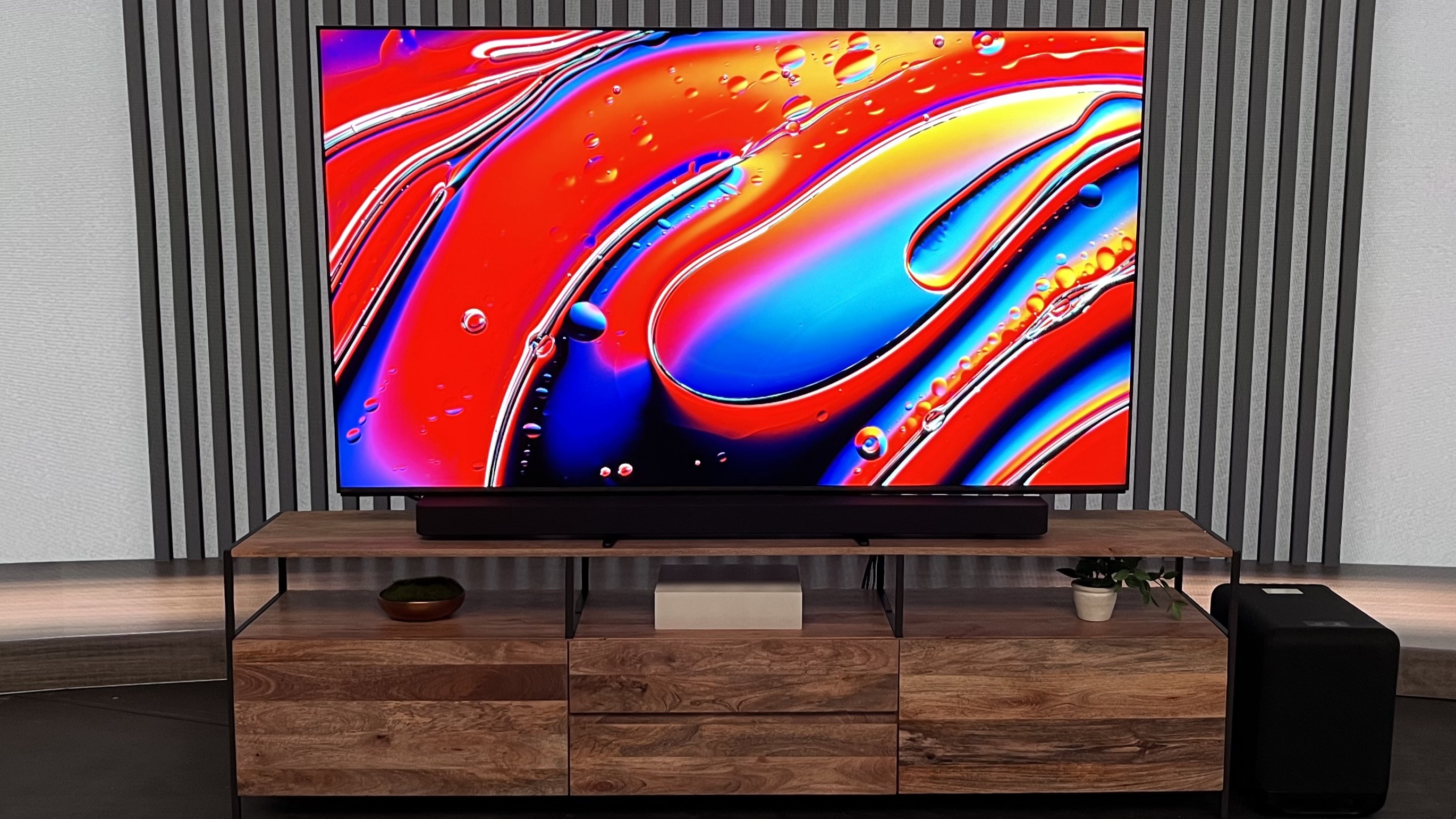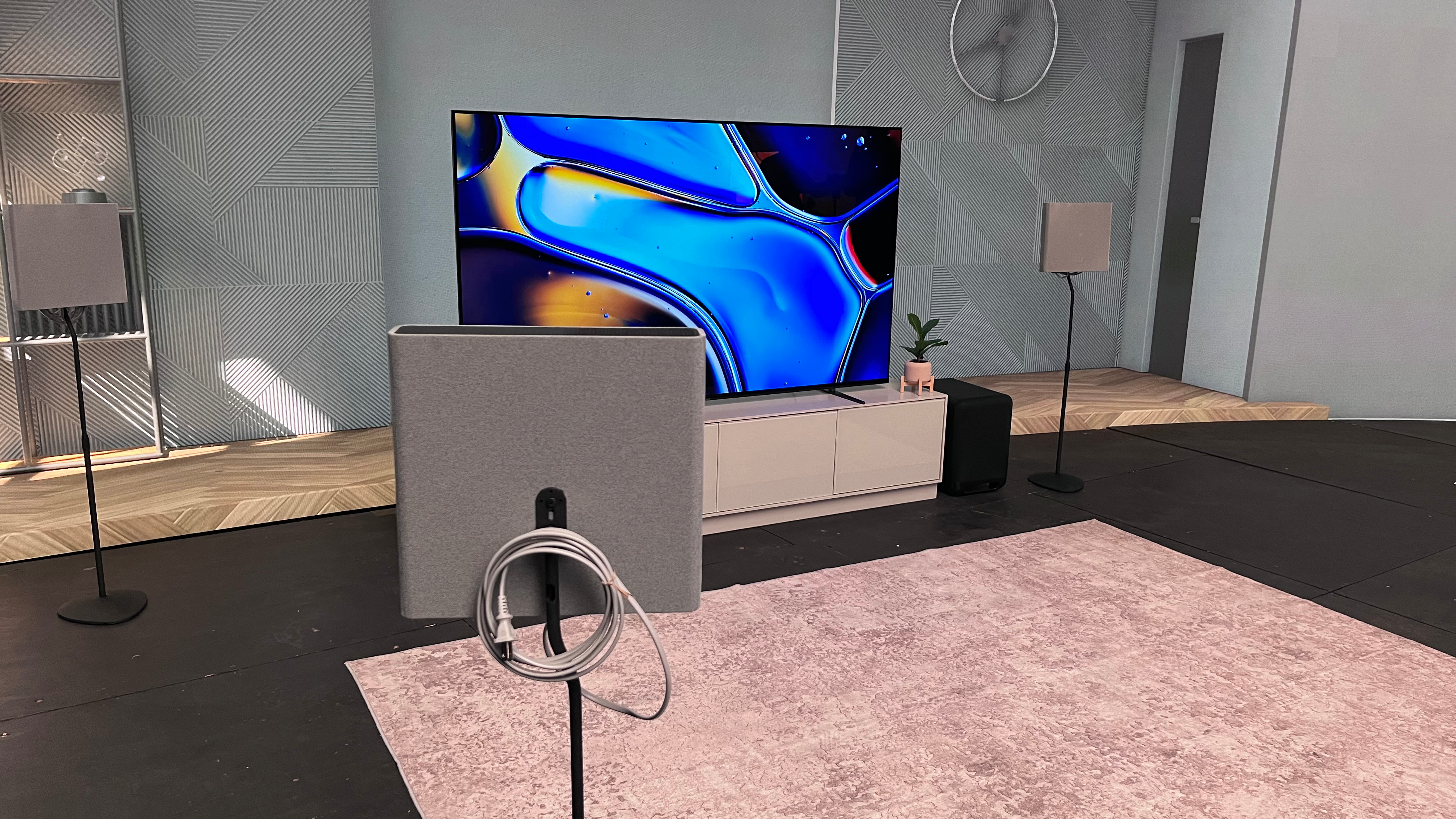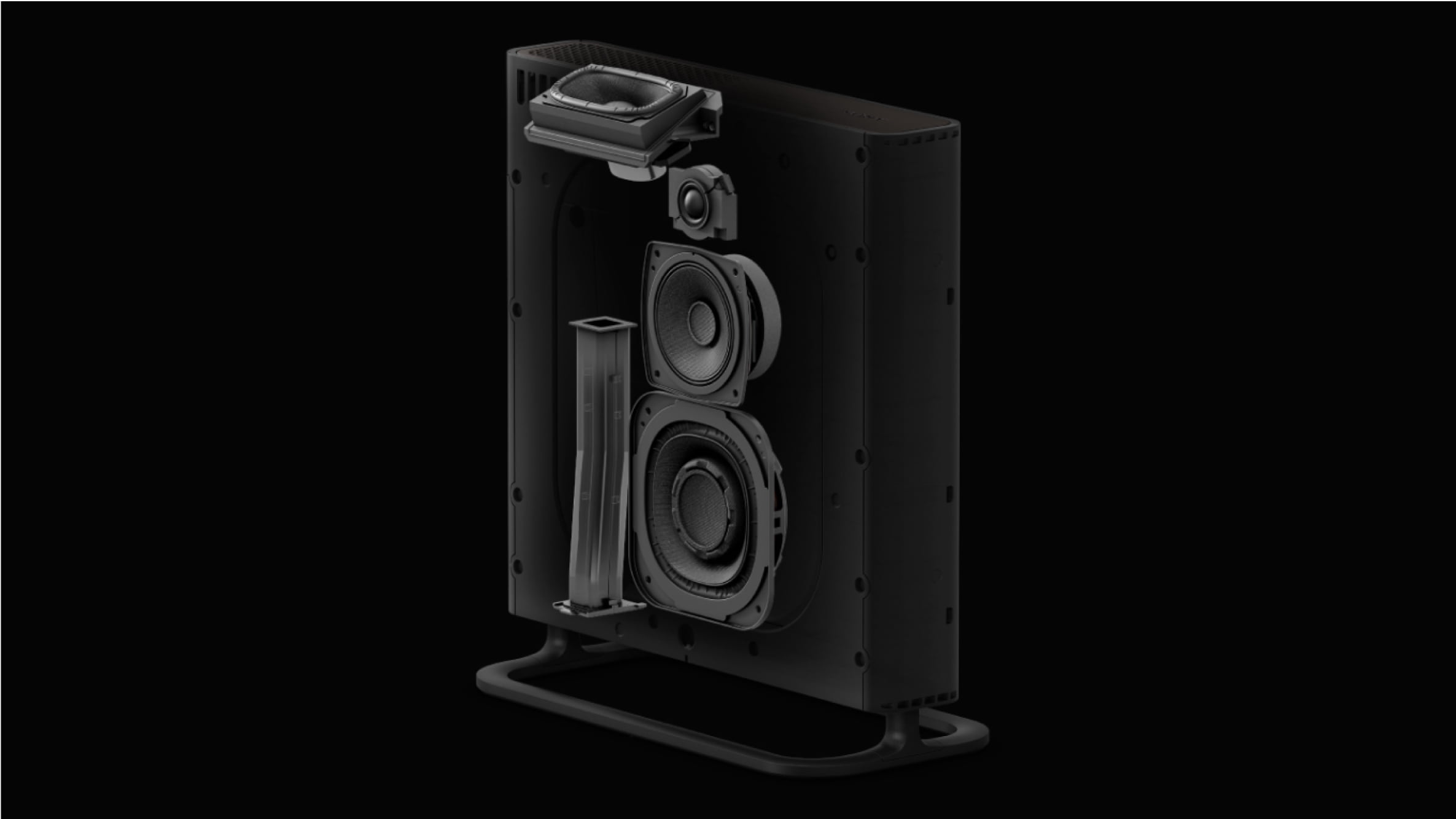Forget soundbars – I used a Sony TV as the main speaker in a wireless Dolby Atmos system, and got cinema-like results
Movie dialogue to die for

Dolby Atmos home theater audio systems can range from a modest soundbar to an elaborate, 39-speaker configuration such as the one TechRadar profiled in 7 home theaters to die for – the most incredible movie setups. The flexible, scalable nature of the Dolby Atmos soundtrack format allows for a wide assortment of configurations between those extremes, with 5.1.2-channel speaker systems being the most common.
Sony makes some of the best soundbars but has also branched out into the best wireless speakers world dominated by Sonos. The company’s new Bravia Theater Quad system ($2,499 / £2,499 (about AU$3,900) is a clever Dolby Atmos soundbar alternative comprised of four compact wireless speakers that can be paired with an optional Sony wireless subwoofer. With a sub added, it becomes a 4.1.4-channel system, with four up-firing Atmos speakers and the center dialogue channel delivered via Sony’s 360 Spatial Sound Mapping virtual processing.
Sony recently sent me a Bravia Theater Quad system to review along with its new flagship Bravia 9 mini-LED TV. The company makes some of the best TVs for sound, and the Bravia 9 gets a full-on audio treatment, with Sony’s Acoustic Multi-Audio+ tech utilizing tweeters embedded in the left and right edges of the TV’s frame to deliver more accurately positioned sound, and two beam tweeters at the screen’s top edge bouncing sound off a room’s ceiling for a more immersive Atmos effect.
Some of the best TVs have good built-in audio performance, but few provide dynamic enough sound that they wouldn't benefit from a soundbar or separate speakers. The Bravia 9’s 2.2.2-channel 70-watt built-in speaker system is one of the better ones I’ve heard, and Sony’s flagship TV also has 3D surround upscaling for non-Atmos soundtracks and a new feature called Voice Zoom 3 that uses AI machine learning to recognize and separate voices so their volume level can be adjusted without affecting the rest of the soundtrack mix.
Another audio feature supported by both the Bravia 9 TV and the Theater Quad system is Acoustic Center Sync, which lets you integrate the TV with a separate speaker system so it can be used as a center channel speaker. This feature has been available on Sony TVs for several years, but I was always skeptical about it. A TV taking the place of an actual center channel speaker in a home theater system? No way!

Getting in Acoustic Center Sync
Setting up the Theater Quad system with the Bravia 9 TV involves first connecting the system’s main wireless control box to the TV’s HDMI eARC port and then running a cable that comes with the Theater Quad from the box to a 3.5mm input on the TV. Once that’s done, the TV’s built-in speakers work in tandem with the Theater Quad system to present Dolby Atmos sound in a 5.1.4-channel configuration.
System setup is carried out using Sony’s Bravia Connect app. This is mainly used for Sound Field Optimization, where the system is calibrated based on factors like viewing distance, speaker location, and room acoustics. Other adjustments in the app include turning on 360 Spatial Sound Mapping, a feature that, along with creating a virtual center channel when Acoustic Center Sync with a TV isn’t used, creates 'phantom speakers' between the actual ones for an even more immersive “dome” of sound.
Get daily insight, inspiration and deals in your inbox
Sign up for breaking news, reviews, opinion, top tech deals, and more.
The TV’s Voice Zoom 3 feature can be used when Acoustic Center Sync is active – a good thing, since there are no controls in the Bravia Connect app to adjust the center speaker level as you would find on most AV receivers.

From Quad to 5.1.4
Before I watched anything with the Theater Quad system, I checked out a few scenes from Top Gun: Maverick with just the Sony Bravia 9 TV’s built-in speakers active and was impressed. Dialogue in the scene where Maverick is introduced to the Air Force squad as their new teacher was full and well-defined, and the TV’s up-firing beam tweeters provided a good sense of height and spaciousness. Dialogue placement was also natural, with voices emanating directly from the screen instead of from below it – an effect you’d normally experience with a soundbar.
When I switched on the Theater Quad speakers for full 5.1.4 Dolby Atmos surround with the Bravia 9 TV serving as a center speaker, the sound field expanded dramatically, with jets in the subsequent training scene literally seeming to zoom across my viewing room. Dialogue also took on a fuller, more dimensional quality, and was well integrated with the Theater Quad speakers at the front of the room. Not only was the Sony TV working as a center channel speaker in this Dolby Atmos system, it was doing that job very well.
Naturally, the next step was to undo Acoustic Center Sync so I could hear how the Theater Quad’s virtual center channel processing compared to the 5.1.4 system with the Sony TV. Once again, I was impressed – dialogue sounded clear and natural, though it now had slightly less body. It also lacked some of the pinpoint spatial accuracy I heard with the Sony TV in the speaker mix, something you also experience in an actual movie theater where an array of speakers is installed behind a sonically transparent screen.
Sony’s Bravia Theater Quad speaker system (full review to come) is a great-sounding and space-saving alternative to a Dolby Atmos soundbar or full home theater speaker system. It’s also incredibly easy to set up and use. I don’t know how it would sound with all Sony TVs that support Acoustic Center Sync, but when paired with the Bravia 9, it delivered a cinema-like experience that made my everyday Dolby Atmos soundbar pale in comparison.
You may also like

Al Griffin has been writing about and reviewing A/V tech since the days LaserDiscs roamed the earth, and was previously the editor of Sound & Vision magazine.
When not reviewing the latest and greatest gear or watching movies at home, he can usually be found out and about on a bike.